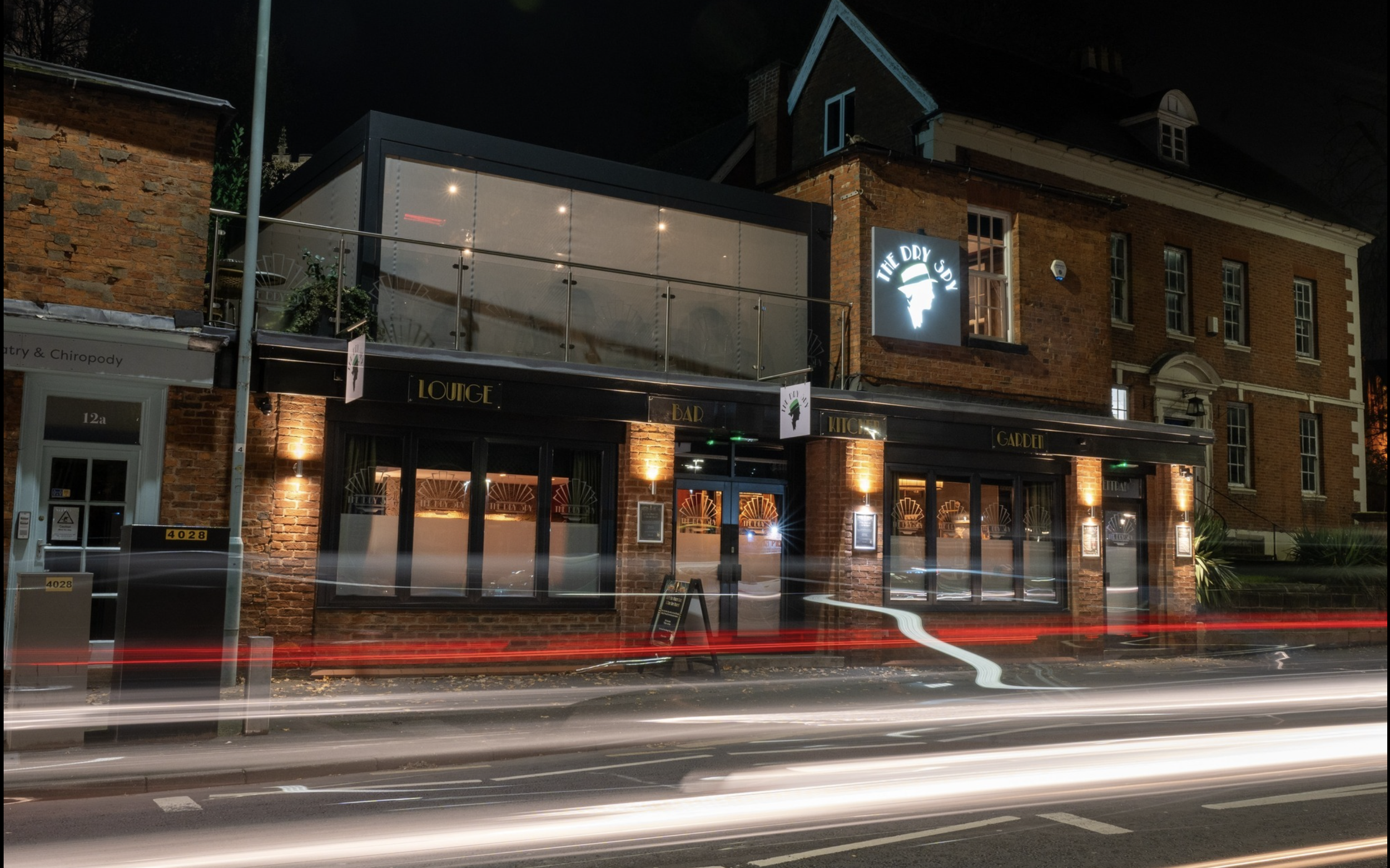
History of the dry Spy
Welcome to The Dry Spy
The original Dry Spy opened its doors in July 2022. Located a short walk from Bromsgrove High Street, the Lounge Bar and Restaurant sits adjacent to St. John’s Church, which provides a stunning backdrop to the Secret Garden and Roof-Top Terrace with unrivalled views over the Town. The Dry Spy opened it’s second door on Knowle High Street in March 2023. Capturing a 1920’s speakeasy vibe, The Dry Spy transports guests back to the Prohibition era of hidden drinking dens. Patrons encounter an aura of intrigue as they enter through a heavy green curtain and enjoy what can only be described as an authentic speakeasy experience.
Have you ever wondered the story behind the Dry Spy? – Learn all about George Cassiday and Roger Butts Below.
The Dry Spy Uncovered
In the late 1970s, the Senate side of Capitol Hill featured a popular California-style restaurant named The Man in the Green Hat. This lively watering hole memorialised the exploits of a dapper gentleman named George Cassiday. Between the Prohibition years of 1920 and 1930, George Cassiday served as Congress's primary bootlegger.
Cassiday's career began after his return from World War I when he obliged a friend's request to obtain alcoholic beverages for two House members. Both had voted in favour of Prohibition. Soon, he was making an average of 25 deliveries a day, transporting bottles to House and Senate offices in a large leather briefcase. Capitol Police, who recognized Cassiday by his trademark emerald hat, allowed him unquestioned access at all hours.
After five years of smooth sailing, however, a sudden squall nearly capsized Cassiday's lucrative business. A Capitol Police officer, whom Cassiday believed to be sympathetic, arrested him for delivering six quarts of whiskey to a House member. This so-called "Green Hat incident" received wide press attention and prompted the House to ban Cassiday from the Cannon Building. Undeterred, the bootlegger shifted his operations to the Russell Building and continued undisturbed for another five years.
In November 1929, word of Cassiday's activity triggered a police raid on his home, where officers seized 266 quarts of premium liquor. Subsequently, Vice President Charles Curtis authorised a "sting operation." With the assistance of Senate officials, the vice president arranged the assignment of young undercover Prohibition Bureau agent Roger Butts to the Russell Building's basement Stationery Room. Cassiday frequently stopped by the Stationery Room in his Senate rounds and used the phone to contact clients.
Butts had imagined the Man in the Green Hat to be a seedy operator, but Cassiday arrived in a well-tailored suit and tan hat. Eventually, Cassiday grew suspicious of the teetotaller Butts, who would come to be known as the "Dry Spy."
On February 18, 1930, Butts entrapped Cassiday by having another Senate employee arrange for a delivery in the senators' parking lot. There, Prohibition agents nabbed him with six bottles of gin. They also confiscated his client list. Numerous senators demanded, without success, publication of that list to clear their names.
The Man in the Green Hat eventually drew an 18-month prison term. He also drew front-page Washington Post exposure with his own by-lined series of articles on how he and others helped at least 80 percent of the lawmakers break the law.
The Dry Spy also gained fame with his own series of articles in the Post. Put out of work by the 1933 repeal of the Prohibition Amendment, he went on to work for the CIA, where he had a hand in the 1961 Bay of Pigs invasion.
